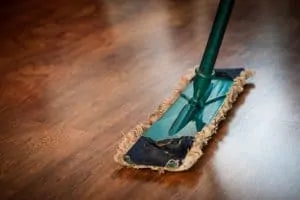It’s no secret that proper cleaning and sterilization is more important now more than ever in the wake of the COVID-19 pandemic. As such, many businesses make extensive use of sodium hypochlorite (also known as bleach) during this process.
But, not everyone understands everything they should about it. Not sure where to start? Don’t worry, we’ve got you covered.
Let’s take a look at everything you need to know.
What Exactly Is It?
Sodium hypochlorite is a chemical compound that’s made up of both sodium and hypochlorite, and its first use dates back hundreds of years. It’s used to extensively clean surfaces that need a more powerful form of cleaning compared to traditional soaps.
Let’s explore the numerous benefits that it can provide in a commercial or industrial setting.
The Benefits
Perhaps the most significant attribute of this compound is that it’s able to sterilize surfaces that it comes into contact with. This means that you’ll not only be able to use the product as a powerful cleaning agent, but you’ll also prevent the spread of harmful bacteria.
For businesses, this is a crucial utility to have access to in order to keep both employees and customers as safe as possible.
As you may expect, there are also a handful of safety guidelines that must be met when it’s used in a business setting. This is especially true since stronger than normal bleach is used in these scenarios.
Usage Guidelines
In accordance with the standards imposed by the National Institute for Occupational Safety and Health (NIOSH), no employee should be exposed to sodium hypochlorite for a period greater than 15 minutes. These areas should also be made inaccessible to any customers that would otherwise be present.
Employees should also wear protective equipment at all times. This includes:
- Eyewear (such as goggles)
- Long clothing to prevent contact with skin
- Protective gloves
The compound should also be stored properly in all circumstances. This means keeping it in airtight bottles away from other materials that could interact with the compound unfavorably, such as acids.
Symptoms of Sodium Hypochlorite Exposure
In most situations, exposure to this chemical will lead to coughing and throat irritation. Extensive exposure, though, could also lead to delirium.
Contact with the skin can cause burning and blistering. If ingested, this chemical will also cause extreme abdominal and stomach pain.
If any of these symptoms arise, it’s imperative that you immediately contact Poison Control.
Someone who’s swallowed bleach should never be forced to vomit, nor should they be given any liquids to consume. Those who inhale the chemical should immediately relocate to a well-ventilated area.
In the event that someone has bleach come into contact with their eyes, they should flush them for at least 15 minutes with water.
Understanding Sodium Hypochlorite Can Seem Difficult
But it doesn’t have to be.
With the above information about how to safely use sodium hypochlorite in mind, you’ll be well on your way toward ensuring that you avoid any complications in the future.
Want to learn more about how we can help? Feel free to get in touch with us today.


